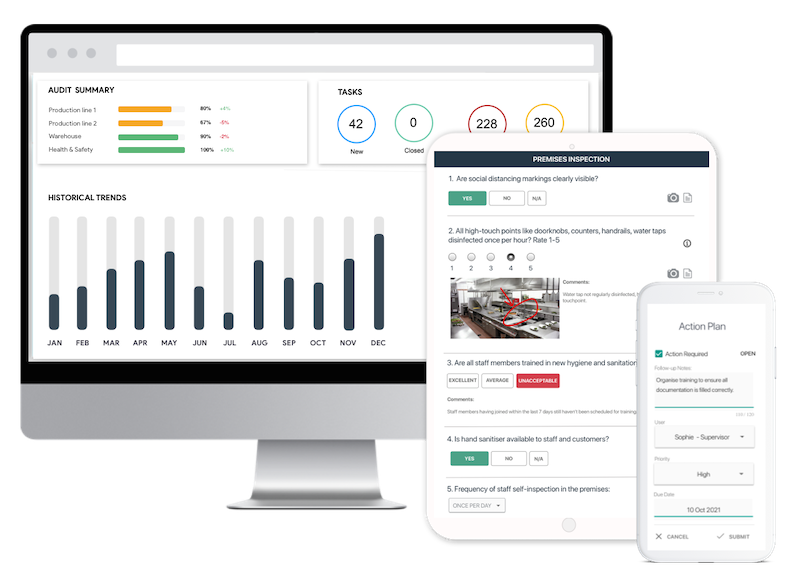- Library ›
- Facility & Services ›
- Laboratory Checklist Template
Laboratory Checklist Template
Housekeeping
Personal Protective Equipment (PPE)
Emergency Preparedness
1. Is the eyewash/safety shower in good working order, with covers in place, and is the pathway unobstructed? Is the eyewash flushed monthly, and is the date of flushing documented? Are personnel aware of the eyewash/shower location and knowledgeable about how to operate the equipment?
|
Photo
Comment
|
Fire Protection
General Practice
Safety Training
Engineering Controls & Ventilation
Gas Cylinders
Chemical Management
Waste Management
Equipment Safety
Electrical Safety
Biological Safety
Cold Room Safety
Laser Safety
Is this sample what you are looking for?
Sign up to use & customise this template, or create your own custom checklist:
Checklist by GoAudits.com – Please note that this checklist is intended as an example. We do not guarantee compliance with the laws applicable to your territory or industry. You should seek professional advice to determine how this checklist should be adapted to your workplace or jurisdiction.
Easy inspection app for your digital checklists
- Conduct inspections anytime, anywhere - even offline
- Capture photos as proof of compliance or areas needing attention
- Instantly generate and share detailed reports after the inspections
- Assign & track follow-up tasks, view historical trends on a centralized dashboard

